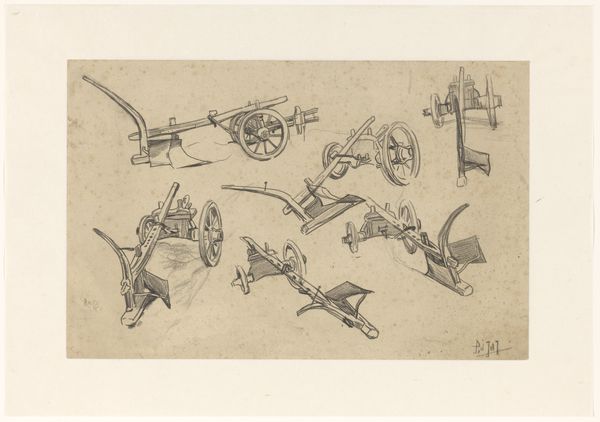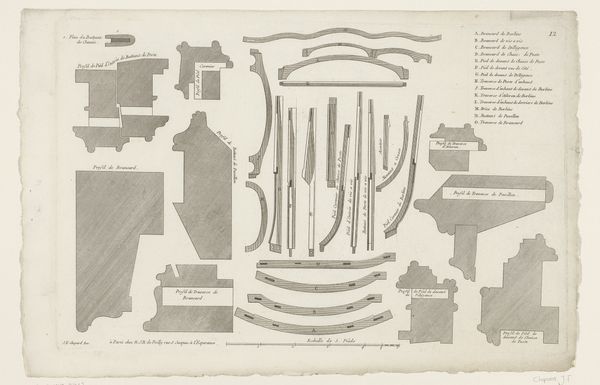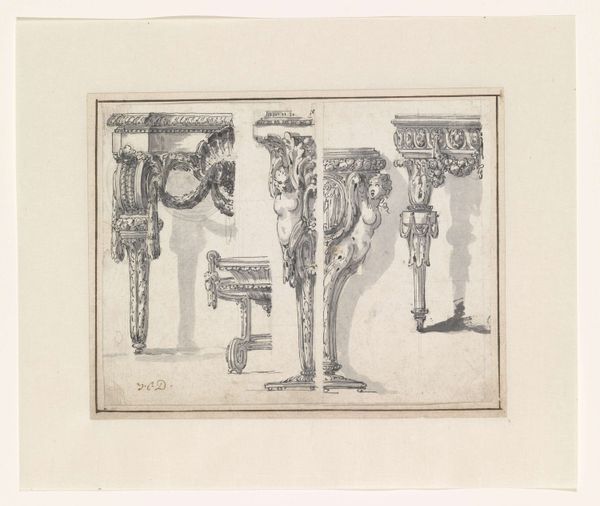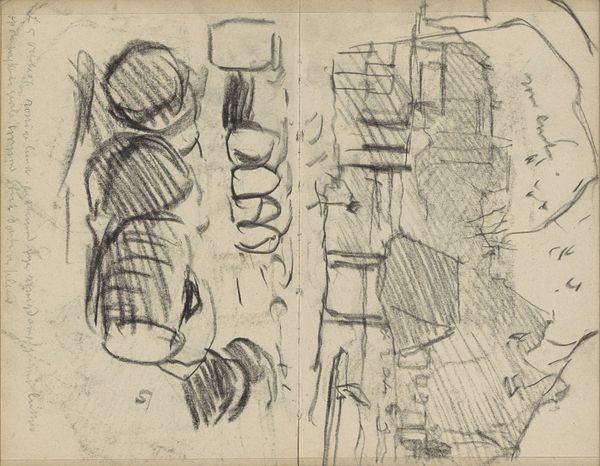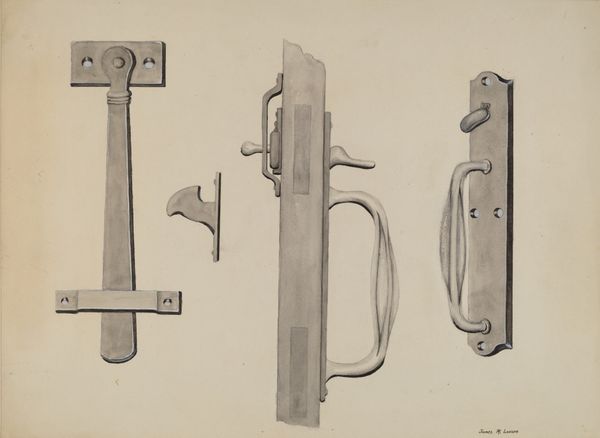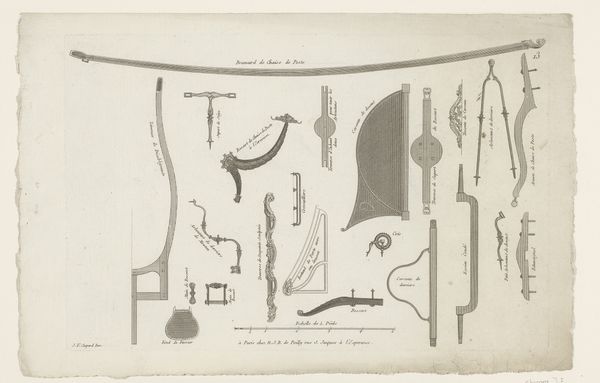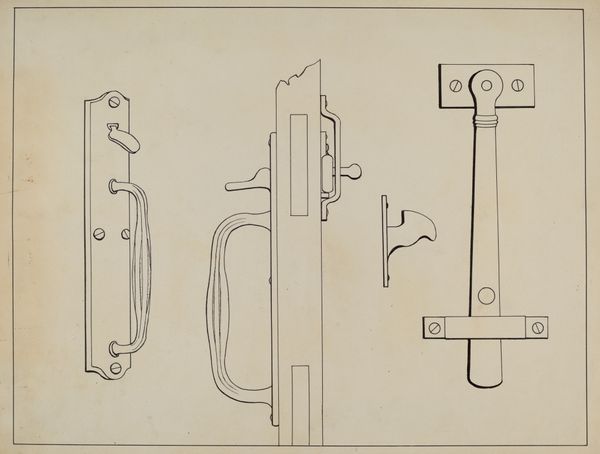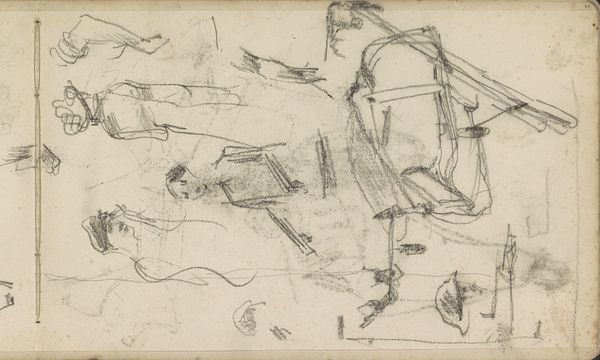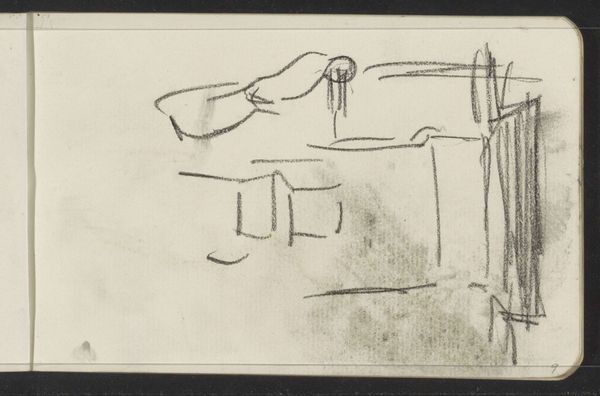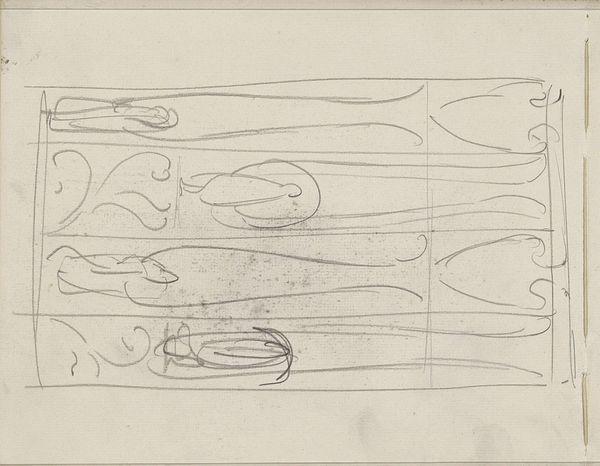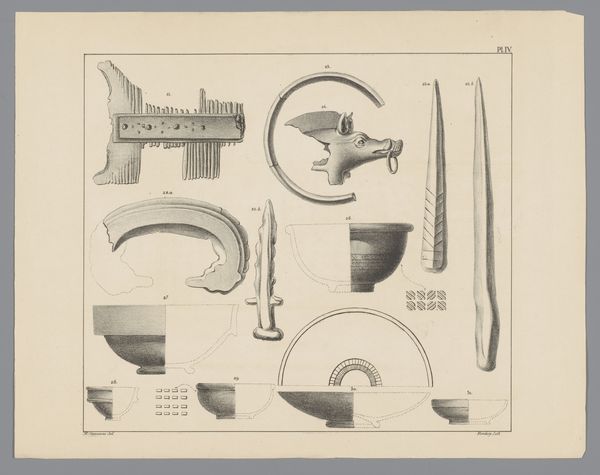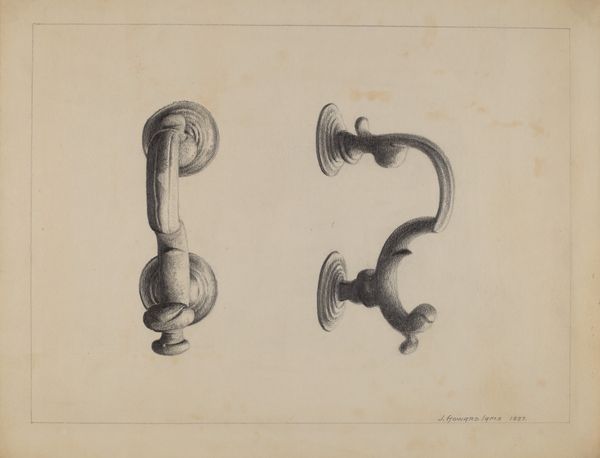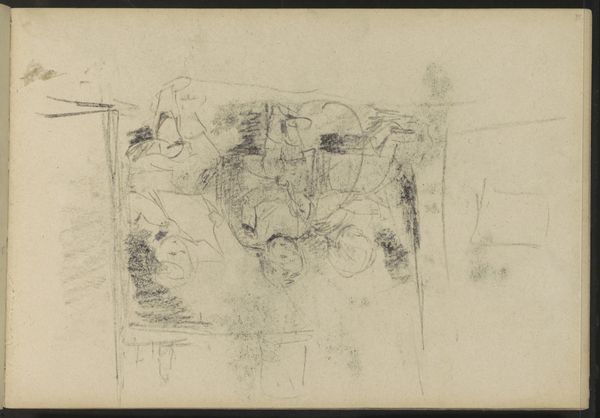
print, etching
#
abstract-expressionism
#
ink drawing
# print
#
etching
#
geometric
#
abstraction
Dimensions: plate: 12.5 x 17.6 cm (4 15/16 x 6 15/16 in.) sheet: 26.1 x 33.5 cm (10 1/4 x 13 3/16 in.)
Copyright: National Gallery of Art: CC0 1.0
Editor: This is Dorothy Dehner’s "Embrial," an etching from 1952. I find its chaotic arrangement of geometric forms and seemingly arbitrary shapes incredibly striking, and the printmaking textures add so much interest. How would you approach interpreting this piece? Curator: This etching intrigues me because it raises questions about the artist's labor and material engagement. As a print, it demands that we think about its production. What matrix did Dehner use? Was it copper, zinc, or another material? What tools and processes were employed? Thinking about the means of its creation, it's possible to appreciate the intense pressure and careful application of acid involved. Do you think that awareness affects how you view its supposed “chaos"? Editor: I see your point; thinking about the effort in the printing process changes my perspective. Knowing that each line required deliberate action gives intention to the seemingly arbitrary, so each mark or decision becomes meaningful. Curator: Exactly! Also, where did she make this print? In her studio or perhaps in a workshop? Printmaking often involved collaborative environments and access to specialized equipment. How did these spaces influence her work, not only technically but conceptually? How was it circulated, bought and consumed? It is part of a series, printed as edition 27 out of 35. That adds value. This piece becomes more about repeatable images, and art being for all. Editor: So, rather than viewing the artwork solely as a representation of the artist's ideas, we should explore the socioeconomic and labor conditions that underpin its creation. It seems that exploring its tangible creation encourages considering broader networks of exchange involved in making art accessible. I appreciate how your materialist lens brings attention to those layers. Curator: Absolutely. Understanding "Embrial" requires examining its materiality and recognizing the cultural context surrounding its production and dissemination.
Comments
No comments
Be the first to comment and join the conversation on the ultimate creative platform.
